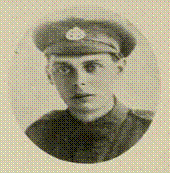
E.E. Riseley , Librarian to the Linnean Society killed in the First World War
(taken from a Frontispiece in the Proceedings of the Linnean Society 1915-1919)
The Linnean Society of London is the world’s oldest active biological society founded in 1788.
Printed in the Proceedings of The Linnean Society for 1918/9 is a short roll of honour listing eight fellows or employees who died in the First World War. Amongst them Geoffrey Watkins Smith, is described as “one of the most brilliant of the younger generation of Zoologists” (proceedings, 1916-17, page 64-65). These volumes with short obituary tributes can now be read freely online .
As part of the World War Zoo Gardens project and WW1 Centenary I have been researching what happened to the staff of zoos, botanic gardens and aquariums worldwide in both world wars, along with associated groups such as zoologists, naturalists and botanists.
The eight FLS / Linnean Society casualties are remembered below:
1. Wilfrid Omer Cooper
Born 1895, he was killed in 26 September 1916. He had been involved with the Bournemouth Natural Science Society, studying isopods. Elected to the Linnean Society only in Spring 1915, he was still a private G/40113 in the 12 Battalion Regiment, Middlesex Regiment when he died aged 21. He has no known grave and is remembered on the Thiepval Memorial to the missing of the Somme battles.

Wilfrid Omer Cooper has no known grave, so is remembered on the Thiepval Memorial (Image: CWGC website)
He is listed on the CWGC website as the son of the late John Omer Cooper (died 1912) and Mrs. Mary Elizabeth Thompson Cooper, 6 Queensland Road, Boscombe, Bournemouth. On the listing for Soldiers Died in The Great War (SDGW) he is listed as born at Boscombe, Bournemouth, Hants and resident at Bournemouth. He enlisted at High Beech, Loughton and was originally listed as formerly B/23290 Royal Fusiliers.
In 1911 census he and his brother Joseph Omer Cooper were both schoolboys living with their 89-year-old father (a retired auctioneer, surveyor and estate agent, born in Reading, Berkshire 1822-1912) and 53-year-old mother Mary (born Willenhall, Staffordshire, 1858-1944) at 50 Westley Road, Boscombe. Two other children had not survived infancy. His brother Joseph served from 1914-19 in Britain in the Royal Army Medical Corps (RAMC).
He may be the author of several books including The Fishing Village and other writings (Literary and Scientific) posthumously published in Bournemouth by H.G.Commin 1917, the author one Wilfrid Omer-Cooper.
2. Ernest Lee
Born in Stanley Cross End, Yorkshire on 11 April 1886, Lee was killed in Flanders in 1915.
Son of a colliery expert, Ernest Lee was educated at the Burnley Technical Institute, before moving to the Royal College of Science where he studied the ‘morphology of leaf fall’. He worked as a Demonstrator and Assistant Lecturer in Botany, Birkbeck College, London. Elected a Fellow of the Linnean Society in June 1911, by 1913 he had moved to the Department of Agricultural Botany, University of Leeds. Here he joined the OTC Officer Training Corps in September 1914 (see links below).
A newspaper picture of Ernest Lee can be found on the Western Front Association web pages in an article on the Leeds University OTC .
Ernest Lee married a Fellow Linnean, Miss Helen Stuart Chambers FLS in November 1914, when he was already listed as ‘Officer in HM Forces’ on his wedding certificate. The daughter of a colliery manager, Helen was listed in 1911 as a lecturer at Royal Holloway College, London. No doubt Helen with her colliery family background could have had fascinating conversations with fellow Linnean Marie Stopes, then a botanist and talking at the Linnean Society on the plant composition of coal, rather than on Married Love.
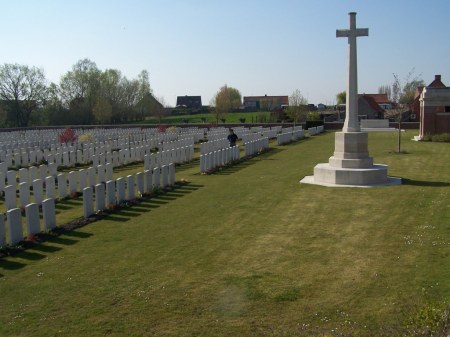
Ernest Lee’s grave lies in the rows to the right of the cross of sacrifice at Artillery Wood Cemetery, Ypres, Belgium. (Image http://www.cwgc.org)
Ernest Lee was quickly gazetted a Second Lieutenant into the 4th Duke of Wellington’s (West Riding) Regiment. After training as a Machine Gun officer, he became a Lieutenant and survived three months at the Front before dying on 11 July 1915. He is buried at III D 12, Artillery Wood Cemetery, Ypres, Flanders.
3. Cuthbert St. John Nevill
Born in 1889, Nevill was killed on 18 April 1918. The eldest son of a stockbroker Sir Walter Nevill, Highbury New Park, London, he was educated at Eastbourne and Uppingham. He worked as a member of the Stock Exchange and joined the City based HAC Honourable Artillery Company with whom he served in Egypt and Aden in 1915, thus being eligible at his wife’s post-war request for a 1914-15 star alongside his British War and Victory medals.
Transferred as a Second Lieutenant to the C Battery, 251st Brigade, Royal Field Artillery and commissioned in 13 April 1916, he served with the RFA in France until his death in service on 18 April 1918. He is buried at III A 1, Chocques Military Cemetery, where many of the burials are related to the No. 1 CCS Casualty Clearing Station.
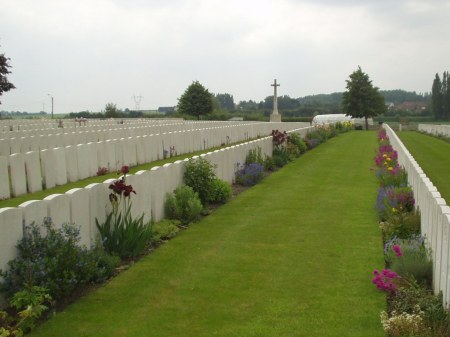
Chocques Military Cemetery
(Image: http://www.cwgc.org)
A photograph of Cuthbert St. John Nevill in uniform can be seen at his Find a Grave website page
In 1918, Cuthbert married Miss Eunice May Le Bas (1890 – 1979) of Guernsey. Widowed within the early months of her first marriage, she remarried another officer (possibly wounded as awarded a Silver War Badge), J.C. Oakley-Beuttler Lieutenant in the Royal Guernsey Light Infantry (1888 – 1940) in November 1919.
4. Edwin Ephraim Riseley
A beaten copper plaque in Latin in the Linnean Society Library in London recorded the death in action of E.E.Riseley, Librarian, Linnean Society 1914-1917.
The plaque is back on display as a tribute to Riseley anhet he Linnean fallen after a period in storage during building work restoration. http://www.linnean.org/The-Society/This+Month/January+2014 Riseley’s workplace, the Linnean Society Library can be glimpsed on the Linnean Society website page photos.
Born in Abbots Ripton (Huntingdon) on 15 February 1889, Riseley had formerly been a library clerk at ZSL London Zoo, joining as a school leaver before gaining promotion in 1914 to library work at the Linnean Society. Shortly after he arrived, the war gave him unexpected promotion when its German born librarian August Wilhelm Keppel was dismissed from office, dying shortly afterwards in London on Christmas Eve 1915.
Riseley enlisted in the 9th Battalion Rifle Brigade on 8th December 1916 and embarked for France on 15 June 1917. Rifleman S/21693, 3rd Battalion, Rifle Brigade was killed by a shell explosion aged 27 on 1st August 1917. He is remembered on panel 46-48 & 50 of the Ypres Menin Gate memorial arches, amongst many other names with no known grave on this memorial to the missing of the Third Battle of Ypres in 1917.
The CWGC records note him as the only son of Ephraim Riseley (1862-1944, a gentleman’s servant) and Elizabeth Riseley of 20 Burnfoot Avenue, Fulham, London. He was also mourned by two sisters, Mary and May according to Edwin’s surviving WW1 service records.
On the back of a list of other dangerously ill hospital casualties telegraphed to relatives is scrawled a list of his possessions, amongst them an English dictionary, notebook, photos, wallet and coins. Hopefully these were returned as requested to his family.
On the army casualty form he is listed under occupation as group 37 (librarian) and on the 1911 census as ‘Library Clerk ZSL’ for the Zoological Society of London. ZSL London Zoo also lost its librarian H.G.J. Peavot a few months earlier 21st April 1917 during the Battle of Arras in the First World War (see previous blog posts). Riseley and Peavot most likely knew each other and worked together.
The interesting inscription on Riseley’s memorial plaque reads in Latin:
In Memoriam Edwini Ephraimi
nati a.d. XV Kal. Mart. A.D. 1889:
Huius bibliothecae per annos 1914-1917 custodis:
quo tempore omnibus consensu officio studiose diligenterque perfecto Sociis se commendavit:
vitam summa spe pare dictum inter arma,
pro patria profudit nano aetatis suae vicesimo nono Kal.Au A.D. 1917.
Which translates as –
In memory of Edwin Ephraim Riseley
Born on the 15th February 1889,
in charge of this library from 1914 to 1917
during which period by universal consent
he endeared himself to the Fellows [of the Linnean Society]
by the energetic and able discharge of his duties;
he had laid down for his country a life of high promise
on the 1st August 1917 in the 29th year of his age.
This is a warm tribute to a colleague although it is hard to read this now without its echoes in Wilfred Owen’s famous poem “Dulce et Decorum est” about the distance between the realities of trench warfare, gassed soldiers and the high-flown language of memorials. Owen’s poem ends ‘Dulce et decorum est pro patri mori’ – a Latin quote which translates roughly as ‘a sweet and fitting thing it is to die for one’s native land’.
5. Sir Marc Armand Ruffer, Kt.
Born in 1859, Ruffer died on 27 August 1917 when the ship Arcadian was sunk in the Mediterranean en route to Egypt where he was involved in health and quarantine work. He had been involved in Red Cross work in Greece.
Arcadian is pictured and described on the Roll of Honour website: http://www.roll-of-honour.com/Ships/SSArcadian.html
6. Geoffrey Watkins Smith
A Captain in the 13th Battalion Rifle Brigade, Geoffrey Watkins Smith died on 10 July 1916 is buried in grave III J 27, Pozieres British Cemetery, Ovillers la Boisselle. CWGC lists him as the son of Horace and Susan Eleanor Penelope Smith, of Beckenham, Kent.

Geoffrey Watkins Smith is buried in Pozieres British Cemetery. (Image: http://www.cwgc.org.uk)
A Fellow of New College Oxford, Watkins Smith wrote several books including Primitive Animals and A Naturalist In Tasmania. Whilst mostly concerned with freshwater crabs and crayfish, his name is still mentioned on websites today in connection with the (now extinct?) Thylacine or Tasmanian Tiger. Smith is credited with introducing into the scientific literature mistaken stories of its vampire, blood-sucking attacks on sheep that he had misheard from local shepherds. Some suggest they were pulling his leg.
7. Sidney Miles Toppin MC
Born on 12 June 1875 (or 1878) in Clonmel in Ireland, he was the younger son of Major General J.M. Toppin, Royal Irish Regiment. After education at Clifton College and Gonville and Caius College Cambridge where he studied for a medical degree, he was offered a Commission in the Royal Artillery from 1900. He served in India (Chitral), mountain batteries in Afghanistan, Burma and Egypt. He served with the 151st Heavy Battery, Royal Garrison Artillery.
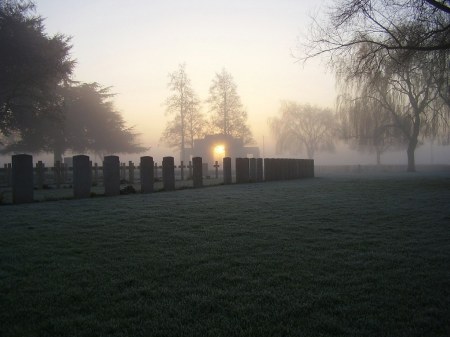
S.M. Toppin lies buried in this cemetery, an atmospheric photo showing only a few of the 9901 WW1 graves at Lijssenthoek Cemetery, Belgium. (Image http://www.cwgc.org)
On a visit home in 1914, he married Viva before serving in Ireland and France during the early days of the war. He was mentioned in dispatches and awarded the MC Military Cross at Loos. He was killed aged 39 near Ypres on 24 September 1917, leaving a widow and infant daughter. Major S.M. Toppin is buried in grave XXIV. G. 6, Lijssenthoek Military Cemetery, Poperinge, Flanders, Belgium (a cemetery linked to Casualty Clearing Stations close to the front but out of the range of German Artillery).
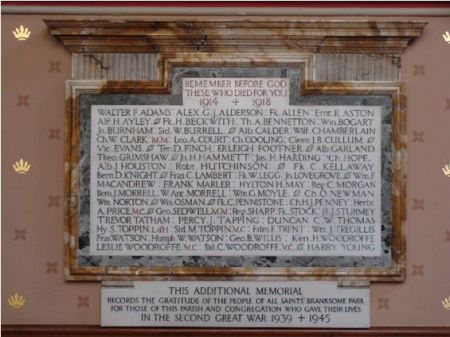
Branksome Park Roll of Honour. Photo: Kim Parker. Source:
http://www.opcdorset.org/BranksomeParkFiles/BranksomeParkRollofHonour.htm
He is listed on the CWGC website as the son of Major-General James Morris Toppin and Mrs. J. Toppin, of Blacklands Park, Wilts; he was the husband of Viva Toppin, of Rose Bank, Sandown, Isle of Wight.
His brother Captain Harry Stanley Toppin 1st Battalion, Northumberland Fusiliers was killed aged 40 on the Aisne, 14 September 1914 and is remembered amongst 3739 names on the La Ferté-sous-Jouarre Memorial to the Missing of the 1914 battles. The CWGC website lists a more extensive biography than his brother receives (and he is pictured in the Illustrated London News casualties in 1917) :
Mentioned in Despatches. Chevalier of the Legion of Honour (France). Son of the late Maj. Gen. Toppin (Royal Irish Regt.) and of Mrs. Jane Toppin, of Westminster Cottage, Branksome Park, Bournemouth and Blacklands Park, Calne, Wilts. Served in the Egyptian Campaign (1898) and the South African War (Mentioned in Despatches). Was French Interpreter. Took full Diploma R.G.S. for Survey Work. Employed by the Uganda Government (1904-8). Chief Commissioner of a party of British Officers representing Peru in demarcation of Boundary between Peru and Bolivia, 1912.
Sidney’s herbarium specimens including Impatiens were bequeathed to Royal Botanic Gardens Kew. The listing for Sidney Miles Toppin (1878-1917) on the Irish botanist section of R. Lloyd Praeger, W.Tempest, Dundalgan Press, Dundalk, 1949 available online “S. M. Toppin … collected plants in Chitral and Burma and a paper of his on ” Balsams of Chitral” was published in the Kew Bulletin, 1920. Dunn named Impatiens Toppinii after him”. (Sources: Britten & Boulger, Biog ed. 2, 302). This Impatiens Toppinii appears now to be a disputed name.
There are several scanned examples online at the JStor Global plants section website of these herbarium sheets and accompanying letters from his mother Janie Toppin to contacts at Kew on behalf of both H.S. Toppin (who collected specimens in Peru) and S.M. Toppin who collected mostly in Myanmar (Burma).
8. Edward John Woodhouse
Born in 1885, Woodhouse died of wounds on 18 December 1917 in France. He graduated in Trinity College Cambridge in 1906 (MA, 1911) before working as an Economic Botanist to the Governor of Bengal in India and working on field pests whilst Principal of the Agricultural College Sabour, Bihar and Orissa. He was elected a Fellow of the Linnean Society in June 1909.
By 1914 he was a Captain in the Bihar Light Horse and joined the Indian Army Reserve of Officers. By February 1915 he was attached to another cavalry regiment as signalling officer, acting adjutant and squadron commander, probably the 38th King George’s Own Central India Horse.
He is buried at III G 6, Tincourt New British Cemetery, Tincourt, France, linked to nearby Casualty Clearing Stations. Woodhouse died of wounds on 18 December 1917. There is a small plot of 15 Indian cavalrymen and some other Indian Army officers in the same cemetery.
In the Presidential Address for 1918, Proceedings of the Linnean Society, Nevill and Woodhouse are noted as two more young Linneans having “laid down lives of much promise in our defence.”
This could be an epitaph for all the lost Fellows of the Linnean Society.
Australian postscript
The Linnean Society of New South Wales Australia also published a Roll of Honour of serving members.
Two were killed – H. Stephens (6 listed amongst Australian forces on the CWGC website) and D. B. Fry.

D.B. Fry is buried to the right of the cross of sacrifice in Beaumetz Crossroads cemetery. (Image: http://www.cwgc.org)
Private Dene Barrett Fry, 4992, 3rd Battalion Australian Infantry AIF died on 9th April 1917 and is buried in plot E5, Beaumetz Cross Roads Cemetery, Beaumetz-les-Cambrai, France. This cemetery which contains around 50 other Australian AIF casualties was begun by fighting units in March 1917. Fry is listed on the CWGC website as the son of Arthur and Caroline F. Fry of Denegully, Northcote Road, Lindfield, New South Wales, Australia.
There is a short tribute to him in the Proceedings of The Linnean Society of New South Wales, 1920 (Volume XLV):
One of our promising junior members killed in action in France 4 April 1917, aged 23, was the first of our Soldier-members to fall. He was a rising young biologist of great promise, elected a member in 1913. his training began at the Australian Museum as a cadet in 1908 where he remained until 1914. When the war broke out, he was a student at the University and a Demonstrator in Zoology, but he gave up his university work in order to enlist , joining the Army Medical Corps in May 1915.
After two voyages in a hospital ship, he transferred to the Infantry, qualifying for the post of Lieutenant. But as there was no vacancy available, he left for the Front with reinforcements as Sergeant. After some time spent at Salisbury Plains, his regiment was sent to France where he took part in several engagements.
His last contribution to science was a paper printed in the 1916 proceedings, as well as ten other notes or papers about reptiles or amphibians published in journals before his death.
Tags: Linnean Society, war memorials, WW1, zoologists


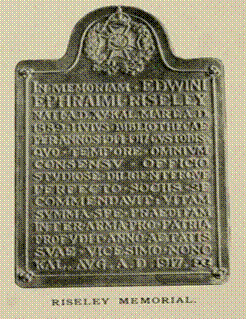
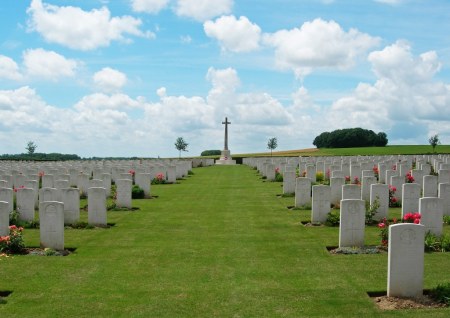
November 4, 2013 at 9:47 pm |
[…] World War Zoo wartime gardens project at Newquay Zoo, "looking back to the past to learn for the future …" « Lost Fellows: The Linnean Society Roll of Honour 1914 – 1918 […]
LikeLike
July 11, 2015 at 8:35 am |
[…] You can read more in our previous WW1 blogpost about other Lost Fellows of the Linnean Society at: https://worldwarzoogardener1939.wordpress.com/2013/09/11/lost-fellows-the-linnean-society-roll-of-ho… […]
LikeLike
July 1, 2016 at 6:33 am |
[…] https://worldwarzoogardener1939.wordpress.com/2013/09/11/lost-fellows-the-linnean-society-roll-of-ho… […]
LikeLike